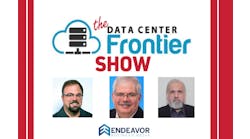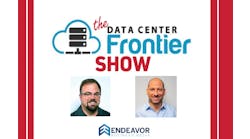For this episode of the Data Center Frontier Show podcast, DCF's editors sat down with Udi Paret, Chief Business Officer of ZutaCore, and Alison Deane, ZutaCore's VP of Marketing, to discuss the company's impactful showing at the NVIDIA GTC [GPU Technology Conference] event this past March.
Held at the San Jose Convention Center in the heart of Silicon Valley, both ZutaCore executives were intensively on hand for the event.
A Busy GTC for Zutacore
At GTC, ZutaCore showcased its direct-to-chip, waterless liquid cooling technology, and announced support for the NVIDIA H100 and H200 Tensor Core GPUs to help maximize data centers' AI performance while delivering sustainability benefits.
"I wore them out," said Deane of her press scheduling at NVIDIA GTC for Paret and his counterpart at the event, ZutaCore CEO, Erez Freibach.
Paret and Deane said that Zutacore drew significant interest at GTC for the breadth of the company's announcements surrounding its HyperCool platform, comprised of direct-to-chip, waterless two-phase liquid cooling technology.
ZutaCore's HyperCool dielectric cold plate liquid cooling system involves a direct-contact, self-regulated, pool-boiling based evaporator, enabling networking and simultaneously cooling all chips on-demand.
Several leading server manufacturers are engaged with ZutaCore to complete the certification and testing on the NVIDIA GPU platforms. Compact, easy to install, and capable of cooling up 1500-watt processors and above, the company notes the platform is also qualified by processor manufacturers Intel and AMD, and deployed in major server manufacturers including Dell, SuperMicro, ASUS, Pegatron.
Centrally during GTC 2024, ZutaCore showcased its H100 and H200 waterless dielectric cold plates supporting densities up to 1500W in the booths of Boston Limited, Hyve Solutions, and Pegatron.
Comparative Cooling Challenges
During the podcast, Paret emphasized the advantages of ZutaCore's Hypercool technology, while addressing comparative challenges faced by single-phase water-based solutions. "The AI explosion is causing a market shift and positioning ZutaCore strategically," he said.
With the NVIDIA H100’s ability to speed up large language models by 30x over the previous technology generation, and the H200 being touted as the world’s most efficient GPU for supercharging AI and HPC workloads, it's safe to these are two of the highest performing chips ever designed (even leaving aside NVIDIA's much-balleyhooed Blackwell platform.)
However, with each GPU consuming 700W of power, this will challenge data centers that are already struggling to control factors of heat, energy consumption and footprint.
ZutaCore’s HyperCool direct-to-chip waterless two-phase liquid cooling technology was designed specifically to answer such demands, and has already been proven to cool processors of 1500W or more, and currently for 100 kW per rack of computing power.
“Next-generation GPUs have unique cooling requirements that are most effectively solved by waterless, direct-to-chip liquid cooling technology for current GPU of 1500W while increasing rack-processing density by 300%,” said ZutaCore CEO Freibach, who is a co-founder of the company.
“Not only do hyperscalers eliminate the risk and massive expense of water leakage in the server, but they can also scale their cooling needs with little to no modifications to current real estate, power, or cooling systems. This is a game changer for the future of AI and HPC.”
Meanwhile, the ZutaCore executives noted how the increasing need for sustainable AI solutions highlights the importance of sustainable practices in data centers.
In the arena of such concerns, ZutaCore's partnership and white-label sales agreement with Mitsubishi Heavy Industries (MHI) addresses the pressing challenges faced by data centers today, including the enhancement of heat exhaust efficiency, promotion of energy conservation, and decarbonization.
Here's a timeline of key points on the podcast:
- 1:34 - Udi Paret, CBO of ZutaCore, reflects on the recent NVIDIA GTC event, highlighting the AI explosion and a major shift in design and consumption observed during GTC. Paret notes that CRN listed their company as one of the hottest at the event.
- 4:09 - Alison Deane, the company's VP of Marketing, discusses ZutaCore's success at GTC in being featured by partners like Boston Limited and Pegatron and showcasing its liquid cooling technology, which she says drew significant interest.
- 10:50 - Udi Paret elaborates on the advantages of the HyperCool technology, emphasizing the platform's elimination of water in servers, the implementation of phase change on the chip for future-proofing, and how this approach addresses challenges faced by single-phase water-based solutions in terms of scalability, sustainability, and performance.
- 19:01 - Data Center Frontier inquires about the competitiveness of two-phase dielectric direct-to-chip cooling compared to immersion cooling.
- 22:08 - Udi Paret explains the mechanics surrounding the dissipation of heat from the ZutaCore HyperCool system and emphasizes the platform's high-quality heat reuse capabilities.
- 26:08 - The discussion touches on ZutaCore partner Mitsubishi Heavy Industries' involvement in data centers, and reflects on the overall industry's growth.Deane and Paret recap more experiences from NVIDIA GTC, highlighting the buzz around AI in general and ZutaCore's innovative liquid cooling solutions in particular, leading to enabling net-zero goals.
- 28:47 - Udi Paret touches again on the market shift produced by the AI technology explosion, noting vertically integrated plays across various industries which aid in ZutaCore's strategic positioning.
Recent DCF Show Podcast Episodes
- DCF Show: Data Center PR Practice Fosters Coalitions, Community Outreach to Reduce Development Backlash
- DCF Show: Data Center Construction and Dallas Market Talk with Burns & McDonnell
- DCF Show: The Top 5 Data Center Industry Stories of Q4
- DCF Show: Steve Madden, Equinix VP of Digital Transformation and Segmentation Marketing
- DCF Show: 8 Key Data Center Industry Themes for 2024, Part 3
Did you like this episode? Be sure to subscribe to the Data Center Frontier show at Podbean to receive future episodes on your app.
Keep pace with the fast-moving world of data centers and cloud computing by connecting with Data Center Frontier on LinkedIn, following us on X/Twitter and Facebook, and signing up for our weekly newsletters using the form below.







